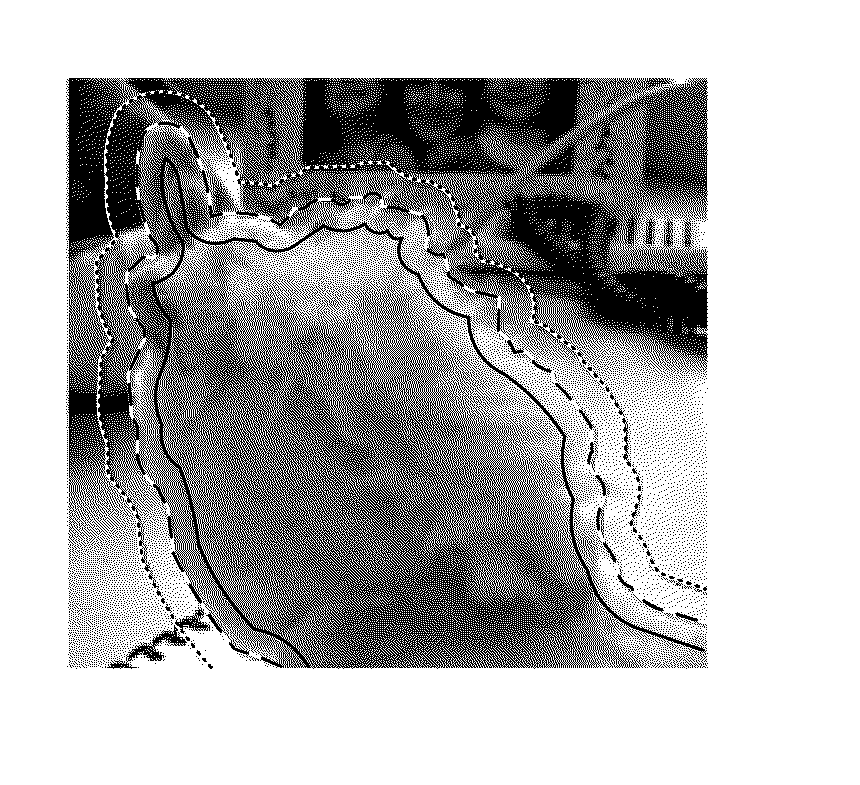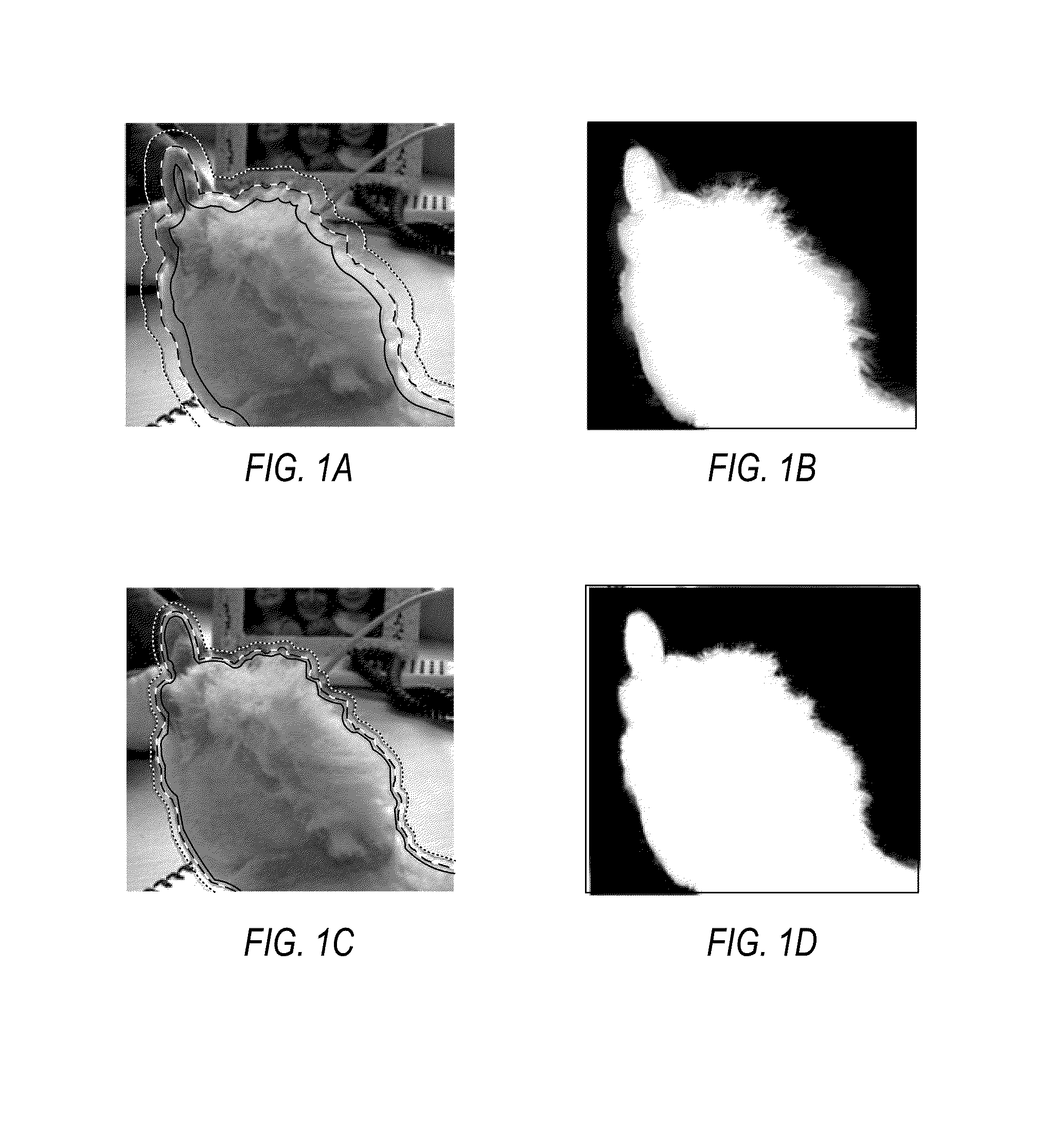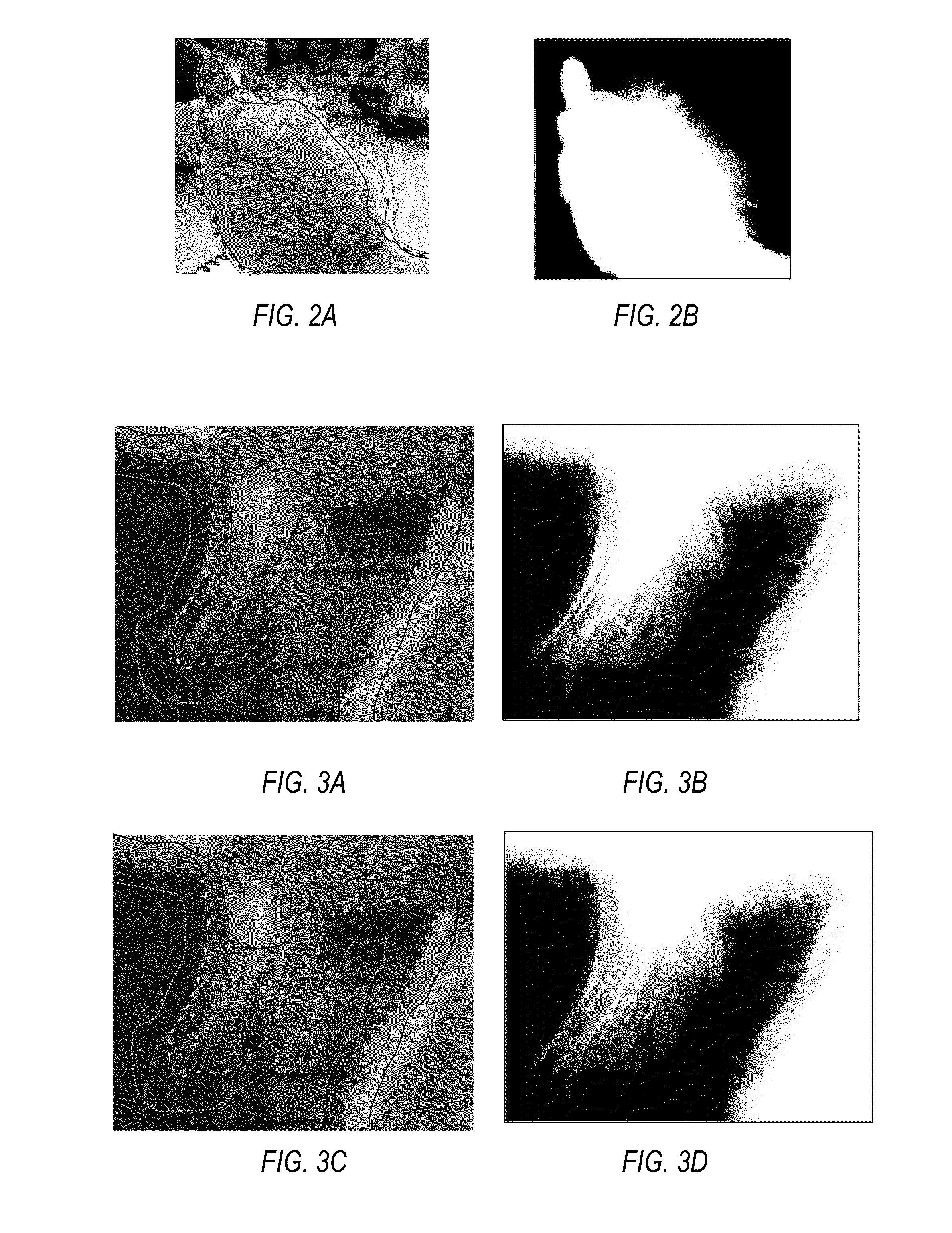Adaptive Trimap Propagation for Video Matting
a trimap propagation and video technology, applied in image enhancement, image analysis, instruments, etc., can solve the problems of inability to effectively freeze bandwidth between frames, and inability to reliably produce stable alpha mattes without temporal jitter.
- Summary
- Abstract
- Description
- Claims
- Application Information
AI Technical Summary
Benefits of technology
Problems solved by technology
Method used
Image
Examples
example implementations
[0099]Some embodiments may include a means for adaptive trimap propagation for video matting, as described herein, and / or a means for temporal matte filtering as described herein. For example, a module or modules of an application may receive input including but not limited to a video sequence and binary masks for the frames in the video sequence, obtain an initial adaptive trimap for at least one frame, compute initial alpha matte(s) for the initial trimap(s), and apply an adaptive trimap method as described herein to propagate the trimap(s) to other frames in the video sequence, as described herein. In addition, a module or modules of an application may obtain alpha mattes for a sequence of video frames and apply a temporal matte filter technique to the frames to reduce temporal jitter in the alpha mattes, as described herein. The module or modules may in some embodiments be implemented by a non-transitory, computer-readable storage medium and one or more processors (e.g., CPUs an...
PUM
 Login to View More
Login to View More Abstract
Description
Claims
Application Information
 Login to View More
Login to View More - R&D
- Intellectual Property
- Life Sciences
- Materials
- Tech Scout
- Unparalleled Data Quality
- Higher Quality Content
- 60% Fewer Hallucinations
Browse by: Latest US Patents, China's latest patents, Technical Efficacy Thesaurus, Application Domain, Technology Topic, Popular Technical Reports.
© 2025 PatSnap. All rights reserved.Legal|Privacy policy|Modern Slavery Act Transparency Statement|Sitemap|About US| Contact US: help@patsnap.com



